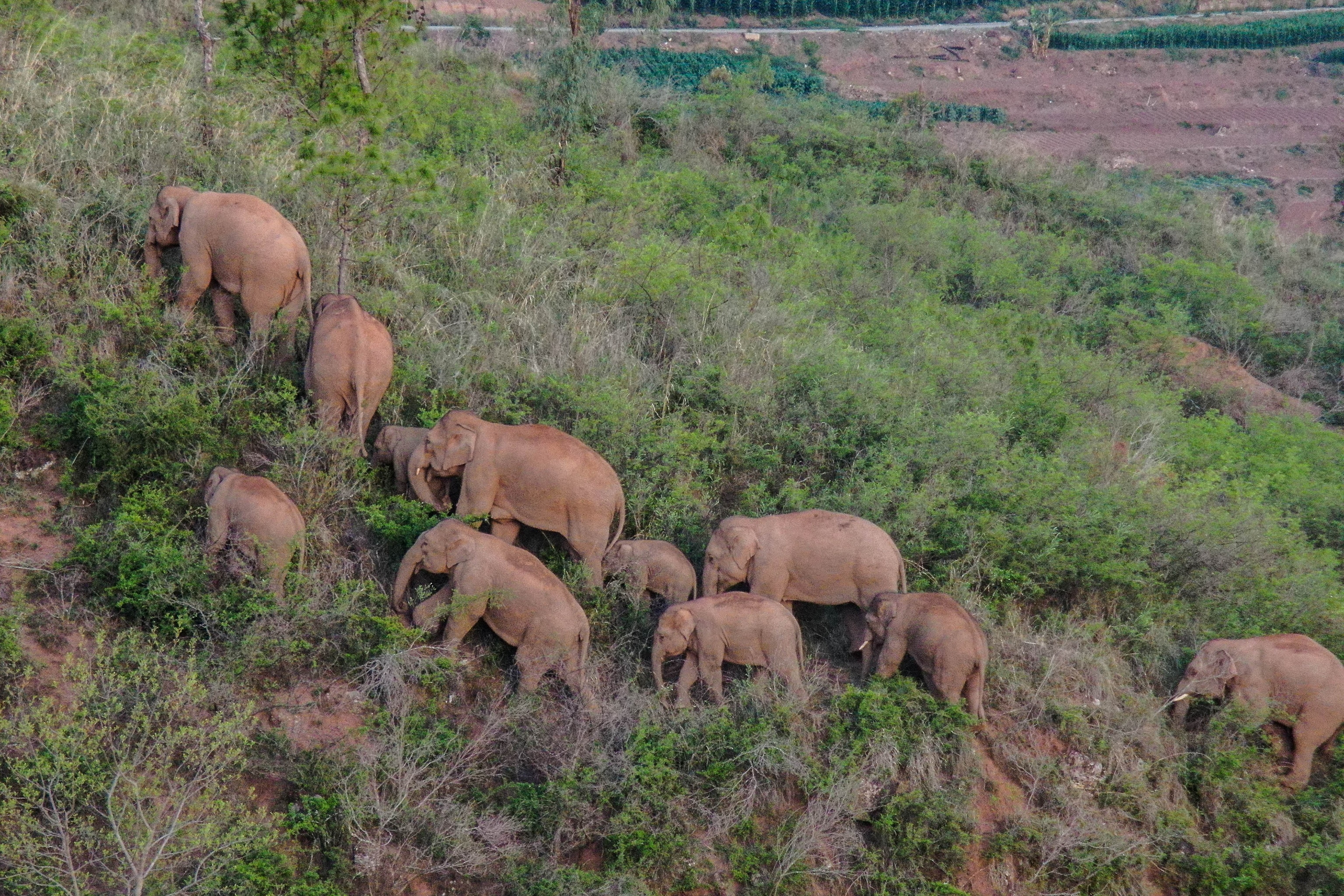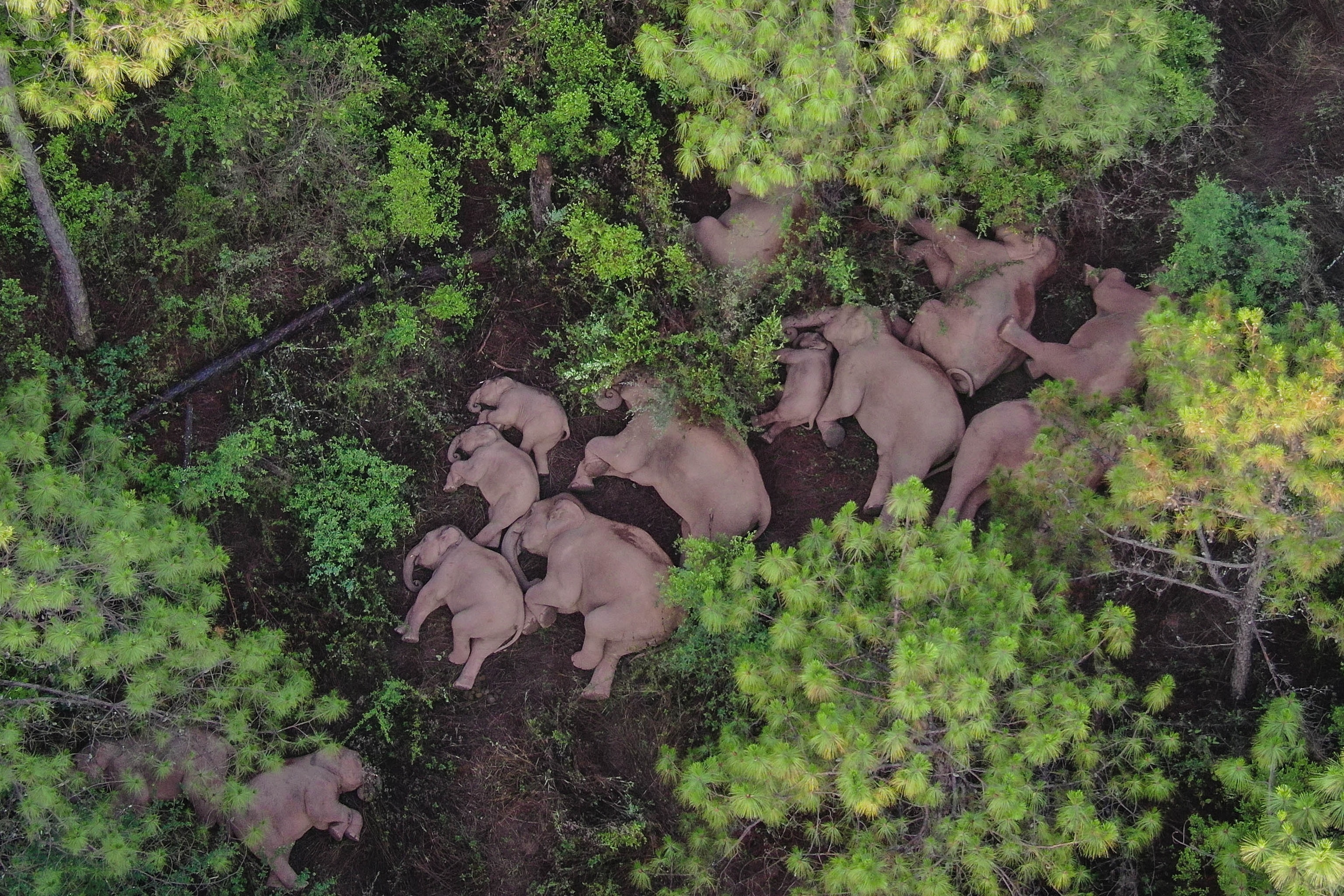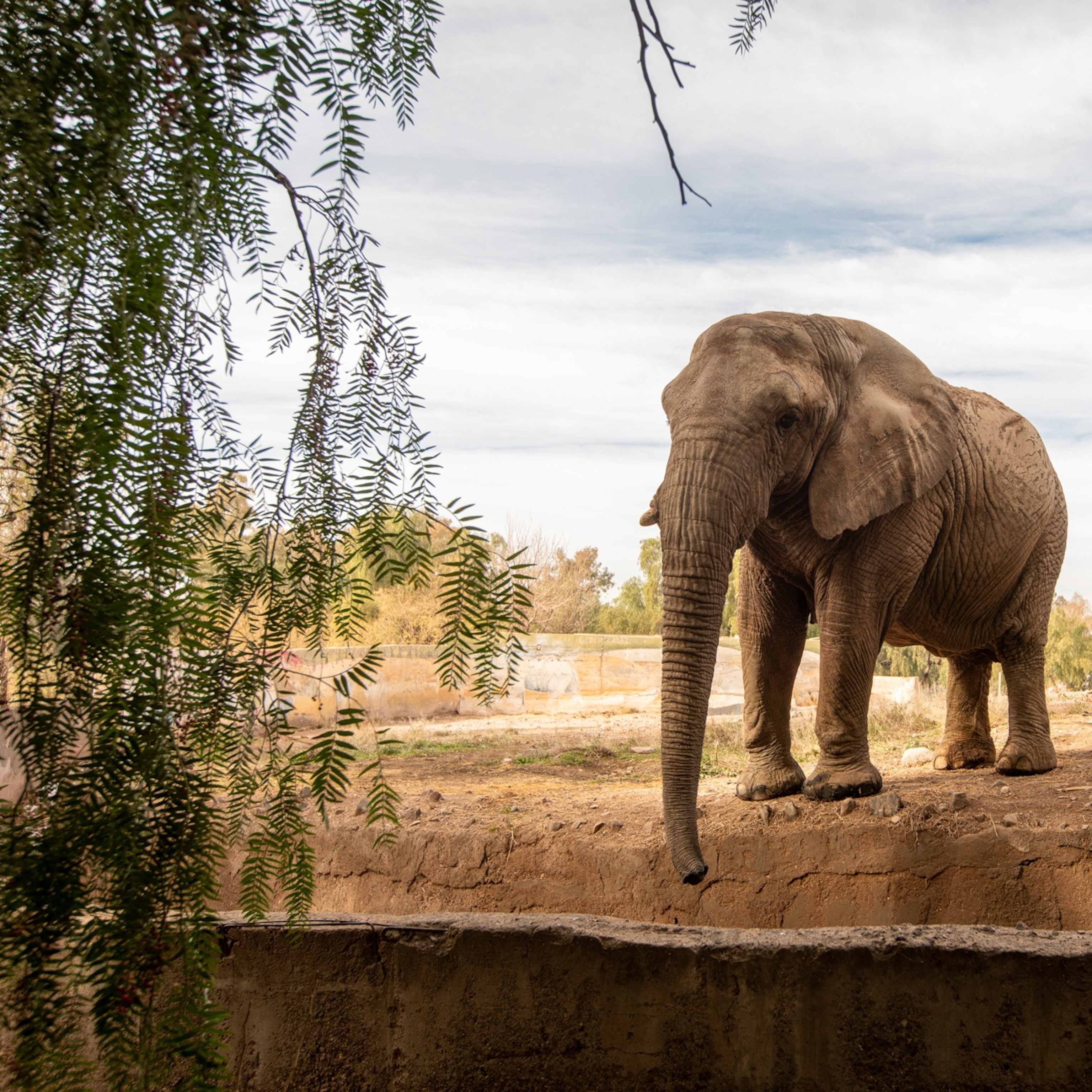A herd of 15 Asian elephants in China is on an unprecedented journey: Over the past year, the pachyderms have wandered 300 miles from their home in Xishuangbanna, a nature reserve in China’s southwestern province of Yunnan, north toward some unknown destination. Their travels have captivated the nation. No one knows why the elephants started migrating in the first place—or where they’re headed along the longest recorded elephant migration in China’s history.
Now, the family of elephants—six adult females, three adult males, and six juveniles—is lingering on the outskirts of Kunming, home to more than eight million people. In recent months, as they’ve drawn closer to the city, they’ve encroached on human settlements, raiding crops, wandering down streets, and searching for food in small towns. They’ve broken into kitchens and popped into a nursing home. Some reportedly may have gotten drunk on fermented grain. While most of the group has banded together, one male left the main herd and is now approximately 15 miles away from the rest
As the herd’s antics have captured public attention throughout the country, experts are left with a daunting challenge: figuring out how to reduce interactions between the elephants and people. Becky Shu Chen, an Asian elephant expert at the London Zoological Society who works closely with the frontline team monitoring the elephants, says “the goal is simple: to avoid human-elephant confrontation.”

“People have no experience with this kind of incident in Yunnan,” says Shu Chen. As a result, the ground teams are crafting and adapting their response in real time. Authorities have deployed drones to track the elephants and are primarily focused on trying to lure them back south using food bait and physical barriers.
Chen Mingyong, a professor at Yunnan University’s School of Ecology and Environment and a member of the expert team working on the front lines, told state broadcaster CCTV that the team’s approach is to “predetermine a route for the elephants, and then, along that path … scatter food with a strong aroma, such as corn, pineapples, and bananas.” Chen adds, “At the same time, we are blocking roads leading to towns and cities, essentially giving the elephants the only choice of taking the road set by us.”
In late May, food bait started to work. After preparing more than four tons of food, the team managed to entice the elephants to make a slight turn south. Currently, the herd is strolling back and forth within the boundary of Yuxi, a city bordering Kunming to the south.
The perils of relocation
But according to Pan Wenjing, a Beijing-based researcher at Greenpeace who has extensive experience in Asian elephant conservation, food baiting isn’t a sure bet. “They need to feel safe, so food alone probably won’t be enough to divert their migration route,” Pan says.
Food baiting also brings risks, says Zhou Jinfeng, secretary-general of the China Biodiversity Conservation and Green Development Foundation, an NGO in Beijing. He says that moderation is key when it comes to baiting. “We cannot let elephants become too dependent on human-made food,” he says.
Trying to divert them with electric fencing is another tactic under consideration, according to Chen.
Electric fences are broadly used in mitigating human-animal conflict and to keep elephants away from crop fields, for instance. But “there are multiple challenges in using electric fences in this case,” says Raman Sukumar, a professor of ecology at the Indian Institute of Science and a prominent expert on Asian elephant ecology and behavior.
He explains that as the elephants wander, the fences need to be swiftly taken down and re-installed in new spots along their path. In addition to this impracticality, trying to get the elephants to go back where they came from—not knowing why they left in the first place—and stay there may be difficult, “given their unpredictable wandering nature,” Sukumar says.
Shu Chen of the London Zoological Society believes these elephants have simply gone too far to walk 300 miles again to return to Xishuangbanna, the nature reserve they originated from, even with assistance.
Some experts in China, including Zhang Jinshuo, a specialist at the Chinese Academy of Sciences, have told state news that the possibility of tranquilizing the elephants with anesthesia and then transporting them back to Xishuangbanna is an option under consideration.
It is not without precedent: in 2019, Yunnan authorities captured a male elephant, who caused extensive damage after wandering into villages, by darting him and then transporting him back to his habitat. But sedating and transporting a herd of 15 elephants likely hasn’t been attempted before in Asia, says Sukumar.
In South Africa, he says, mass translocations of elephants have been undertaken. But China lacks the expertise and infrastructure for this sort of operation, and the geographic complexity of densely forested Yunnan “would make it much more difficult to do than in South Africa, where most of the tranquilizing was done in open areas.” Also, it would carry immense risk, especially with young calves, says Greenpeace’s Pan.
“They are a closely knit family and are visibly on alert for potential dangers,” she says. “To tranquilize even just one elephant will very likely agitate the entire herd, which could cause unimaginable consequences.”
A sustainable solution
The current efforts—food baiting and fencing—are all short-term, Shu Chen says, with the single goal of preventing wildlife-human conflict. For many, however, the real question is how to create a sustainable long-term solution for the elephants.
Zhou believes the best solution would be to create a new national elephant park close to Kunming, where the group is now. “There are many national, provincial, and municipal nature reserves in Yunnan,” he says. “Many of them have the potential to become these elephants’ temporary and [then] permanent habitat.”
He stresses the importance of building ecological corridors connecting the existing four elephant nature reserves in Yunnan, allowing the animals to migrate easily and safely.
Sukumar agrees. Drawing from experience in India, Sukumar suggests the authorities try to lure the elephants into a small holding area where they would have food and security while experts search for a new habitat nearby. “If China is serious about wild Asian elephant conservation, [it] needs to find this herd of elephants a new home,” he says.
Shawn Yuan is a journalist, photographer, and a National Geographic Explorer from China. Having reported from over 20 countries, Shawn now splits his time between the Middle East and China, and is particularly interested in human rights and environment. He speaks Mandarin, Cantonese, Arabic, and English.
The National Geographic Society, committed to illuminating and protecting the wonder of our world, has funded Explorer Shawn Yuan's work. Learn more about the Society’s support of Explorers highlighting and protecting critical species.









